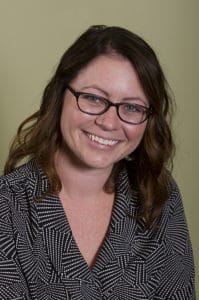By Cali Curley, assistant professor, IU School of Public and Environmental Affairs at IUPUI
Every March since 2012, Brackets For Good, an Indianapolis-based 501(c)(3) charitable organization, hosts online “competitive giving” fundraising tournaments. With March Madness as the impetus, there are now nonprofits in 10 additional cities involved, and a national competition.
Participating nonprofits organizations rally enthusiastic donors to out fundraise their opponents in order to advance into the next round of the tournament. By generating stakeholder excitement, promoting the tournament, and soliciting corporate involvement, nonprofits earn increased exposure, raise funds, gain access to free fundraising tools and are introduced to new donors.
Dollars from donors translate to points, giving participants the opportunity to advance in their bracket. Competing nonprofits keep donations received during tournament play, no matter how far they advance. The winning organization in each city receives an additional Championship grant sponsored by corporate sponsors.
This year’s tournament concluded last week with more than $3.5 million raised for nonprofits across the country. That total eclipsed the amount that the organization helped raise in its first five years combined. Indianapolis led all areas with more than 7,000 individual donations.
Capitalizing on the excitement of this bracket-style tournament, Brackets For Good teamed up with myself and SPEA at IUPUI colleagues Drs. Jamie Levine Daniel and Marlene Walk to better understand the impact that competitive giving, as a new fundraising strategy, has on nonprofits, their donors and the community at large (e.g., sponsors, participating cities).
Guided by input from Brackets for Good, this ongoing research reflects community needs and holds academic and practical relevance. For instance, a grant from the IUPUI’s Sports Innovation Institute made it possible for the SPEA research team to incentivize donors with additional dollars to donate in exchange for donors’ participation in a survey. Data from the donor survey provides insight into donation frequency, donation reasoning, expectations and the impact of “competitive giving” on supporters’ decision to give. Additionally, participating nonprofits were surveyed to paint a clearer picture about the sector’s capacity to adapt to the evolving forms that philanthropy is taking.
As millennials become even more central participants in philanthropy, fundraising innovations such as ‘competitive giving’ becomes even more important.
SPEA’s collaborative-competitive-giving research team will begin investigating the results to answer questions central to understanding the implications of using competition in philanthropy.
Keep an eye out for future publication of findings.

Cali Curley joined SPEA IUPUI in 2014 after receiving her doctorate in Public Administration and Policy from the Askew School at Florida State University. Her research focuses on the intersection of policy and local government. Her primary interests revolve around the individual level motivations, incentives, and barriers related to policy participation decisions.

